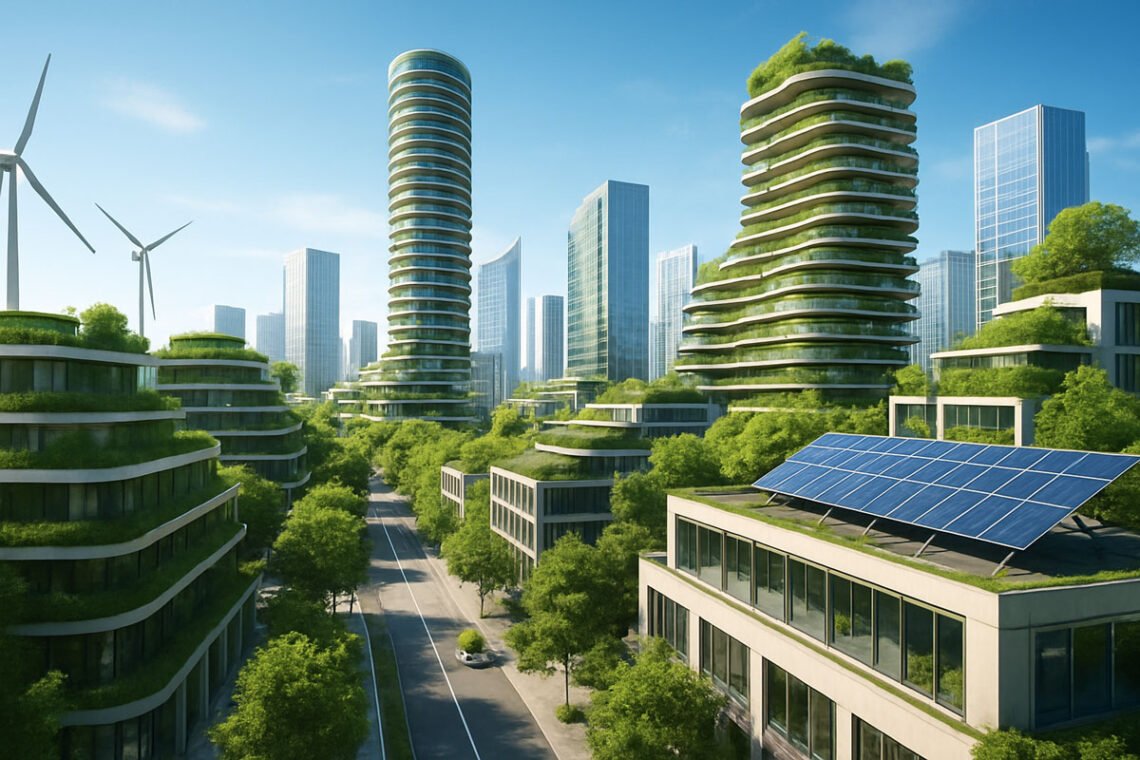The rapid evolution of our world demands a new blueprint for cities, one that moves beyond mere concrete and steel. Into this space steps Axurbain, a forward-thinking concept that is quickly becoming a defining model for 21st-century urban development.
It represents a deliberate fusion of urban vitality and suburban tranquility, all powered by smart technology and a deep commitment to sustainability.
This movement is not simply about building taller or denser; it is about fundamentally reimagining how people interact with their environment. At its core, Axurbain seeks to enhance the quality of life for every resident, creating communities that are not only efficient but also deeply connected and vibrant.
What is Axurbain? A Vision for Integrated Communities
Axurbain can be understood as a holistic approach to urban planning. The name itself is telling, combining “Ax”—suggesting axis, direction, or focus—with “urbain,” the French word for urban.
It signifies a focused direction toward a balanced and integrated urban ecosystem. This concept champions a world where modern conveniences and technological innovation coexist seamlessly with nature and community well-being.
Unlike older models that often prioritized infrastructure over inhabitants, Axurbain places the human experience at the center of its design philosophy.
It is a framework that addresses the complex pressures of population growth, climate change, and the need for greater social equity within metropolitan areas.
The Core Pillars of Axurbain Design
The Axurbain philosophy rests on several key, interconnected principles that guide its implementation in real-world projects. These pillars ensure that the resulting communities are resilient, smart, and livable.
Human-Centered Design
This principle is paramount. It dictates that every design decision, from street layout to public space creation, must serve the needs of the citizens. The goal is to foster accessibility, inclusivity, and overall well-being.
This results in walkable neighborhoods, easy access to essential amenities, and public spaces designed for interaction and communal gathering.
Smart Technology Integration
Technology in an Axurbain environment is purposeful, not pervasive. It utilizes tools like IoT, AI, and data analytics to improve efficiency, manage resources, and enhance safety without overwhelming the residents.
This includes intelligent traffic management, smart utility grids, and digital platforms that connect citizens to local governance and services.
Radical Sustainability
Environmental responsibility is a non-negotiable element. Axurbain demands green infrastructure, such as urban farming, green rooftops, and energy-efficient building standards.
It also strongly promotes sustainable mobility, prioritizing public transit, cycling, and pedestrian pathways over reliance on private vehicles.
Transforming Urban Spaces and Lifestyles
The application of Axurbain principles leads to tangible transformations in both the physical landscape and the daily lives of residents.
In urban planning, it manifests as mixed-use developments where living, working, and leisure spaces are deliberately interwoven. This proximity reduces commuting times and strengthens local economies.
For individuals, the lifestyle is marked by convenience and a closer connection to nature. Clean, green spaces are integrated into the city fabric, offering immediate access to parks and natural light.
Businesses also benefit, finding themselves in innovation-driven ecosystems where collaboration is encouraged by the smart infrastructure. These hubs often become magnets for talent and investment.
Navigating the Challenges of Implementation
While the vision of Axurbain is compelling, its implementation is not without significant hurdles. Scaling such a comprehensive model requires overcoming several complex challenges.
One major obstacle is the sheer cost of transformation. Retrofitting existing cities or building new ones from the ground up to meet these standards demands substantial, long-term financial investment.
Another critical challenge is ensuring digital equity. The reliance on advanced technology must not create a new “digital divide,” leaving segments of the population behind due to lack of access or technical literacy.
Furthermore, policy barriers and cultural resistance can slow progress. Outdated zoning laws and a natural human reluctance to change established traditions often require careful negotiation and public education to overcome.
The Future Trajectory of Axurbain
Looking ahead, the Axurbain concept is poised to evolve and expand its influence globally. It offers a scalable framework that can be adapted to various cultures and geographical needs, from megacities to smaller metropolitan areas.
The future will likely see a deeper integration of emerging technologies, such as virtual reality for urban planning and blockchain for transparent governance systems.
Crucially, the movement emphasizes citizen empowerment. The goal is a future where residents are active participants in the design and continuous refinement of their urban environments, ensuring the city truly serves the people.
Axurbain is more than just a trend; it is a necessary evolution in how humanity chooses to live together. It stands as a powerful guidepost for building the next generation of cities—ones that are smarter, greener, and ultimately, more human.




